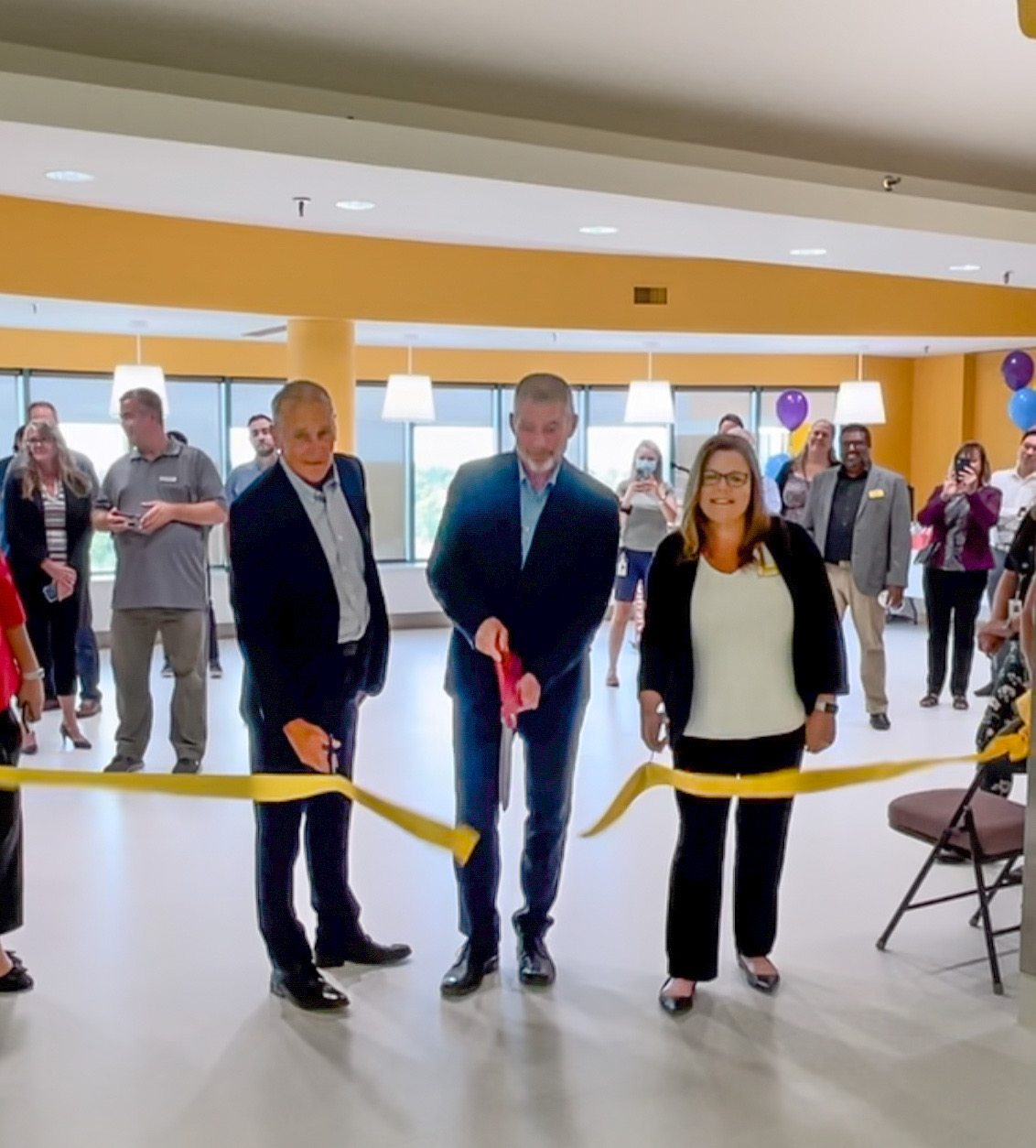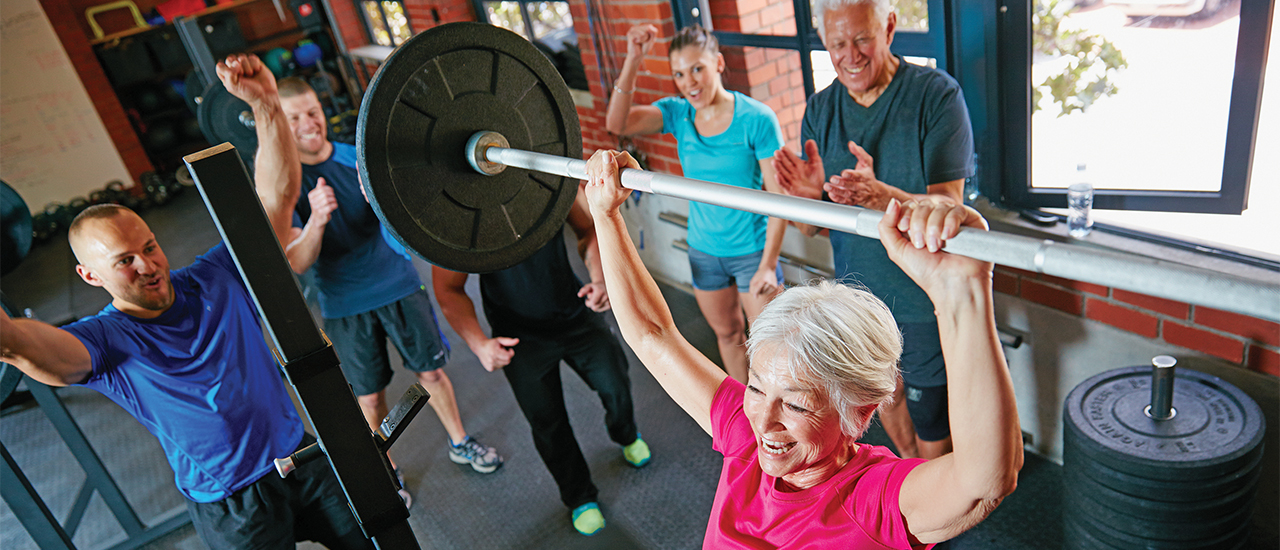
It’s never too late to start a strength training program—and doing so may be vital to your health.
Story by Shawna Culleton. Photos by Twila Cuthbert (BKin, CSEP-CEP, CSCS), strength coach at Pure Lifestyle, ">
When it comes to fitness, strength training offers the greatest rewards for your time and money, no matter what your age.
But if the very idea of setting foot in a gym or lifting a barbell makes you laugh out loud, consider this: whether you’re 40, 50, 60, or beyond, it’s vitally important to build and maintain muscle mass. Used properly, even light weights can help you enhance balance, prevent falls, maintain functional independence and mobility, improve mental health, and reduce your risk for developing chronic diseases such as stroke, heart disease, high blood pressure, cancer, diabetes, and osteoporosis.
Strength training doesn’t mean Olympic power-moves or transforming yourself into the Incredible Hulk (unless that’s what you want!). It’s never too late to start, or to start again. Research shows that, throughout your entire life, your muscles retain the capacity to re-build themselves stronger than they were the day before.

Twila Cuthbert (BKin, CSEP-CEP, CSCS)
Strength training’s number one benefit is that it helps you maintain your independence, says Twila Cuthbert (BKin, CSEP-CEP, CSCS), a strength coach at Pure Lifestyle. “It’s the move-it-or-lose-it principle in action. If you avoid the stairs because they’re a challenge for you now, later you won’t be able to get up and down those stairs at all.”
Before you begin strength training for the first time, or jump back onto the wagon, talk to your doctor. If you have experience lifting weights, working out at home may be a fine option, but Twila says a gym or community centre usually offers better and/or more diverse equipment, a social environment, and professional supervision—all of which are important for newbies who need to learn how to train safely at their current level of ability.
If you don’t know a tricep from a tricycle, it’s especially critical to learn from an expert before lifting that first barbell off the floor. Hiring a personal trainer or strength coach can keep you motivated, knowledgeable about what you’re doing, and injury-free. Attending a strength training class taught by an accredited leader can be a more budget-friendly way to get expert advice. Winnipeg YMCAs and city programming found in the Leisure Guide offer an excellent variety of programs geared to older adults.
Cuthbert recommends finding a personal trainer with a kinesiology degree or similar university degree. Also look for certification from the Manitoba Fitness Council or the Canadian Society for Exercise Physiology (CPT or CSEP). “They have education beyond their degree specific to working with older adults, and they have liability insurance.”
A trained expert can perform a functional fitness test to measure your ability to perform regular daily activities, such as getting in and out of your car, carrying groceries, pouring milk, and maintaining an active social life. A trainer can identify your weaknesses and help eliminate them or compensate for them.
Even when you know it’s important, the prospect of strength training may still feel daunting, especially for women from a generation never encouraged to exercise in their youth, says Cuthbert. But in her experience, the fear factor wears off quickly. “Training is fun. They start doing things they never thought they could. Time in the gym creates opportunities to connect with other people, a sense of accomplishment, and the physical health benefits of becoming stronger and more confident in their bodies.”
Training doesn’t mean you’ll bulk up like a power-lifter. “Nor will getting strong make a woman masculine,” Cuthbert says. “You can be strong and be feminine.”
If those aren’t enough reasons to begin training for strength, studies show that regular physical activity can reduce the symptoms of dementia or delay its onset. “Physical exercise is also brain exercise,” says Cuthbert. “Not only are you working your muscles, you’re teaching your brain new movement patterns, which is another way of keeping your brain active and protecting your cognitive integrity.”
Getting Started
- Perform 8 to 10 exercises involving all the major muscle groups such as the chest, back, shoulders, biceps, triceps, legs, and core
- Use enough weight to complete at least 1 set of 10-15 repetitions (“reps”) of each exercise
- Work out 2 to 3 non-consecutive days a week to let your body recover
Source: ACSM (American College of Sports Medicine) and AHA (American Heart Association)
Sample Full-Body Workout
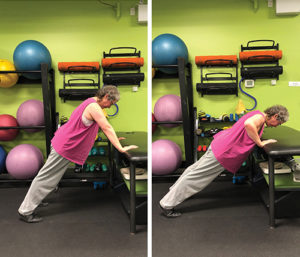
Bench push-up
Targets the chest and front shoulders, as well as the arms and back
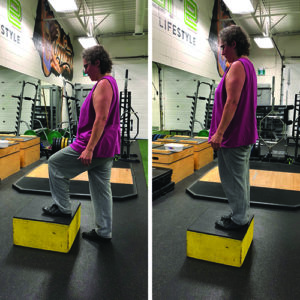
Box step-up
Targets the legs and gluteus maximums
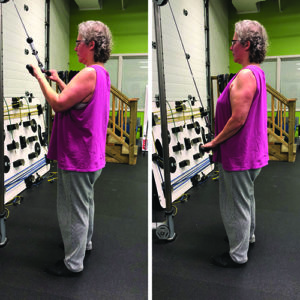
Cable triceps press-down
Targets the triceps (the muscles that straighten the arm)
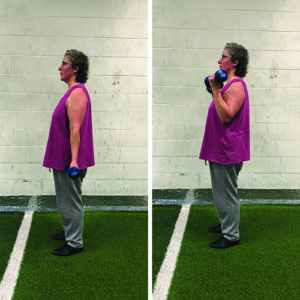
Dumbbell arm curl
Targets biceps (the muscles that contract the arm)
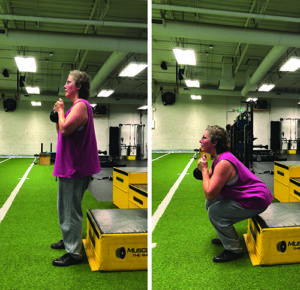
Kettle bell squat
Targets the legs, abs, lower back and calves
Recent News

Winnipeg Jets Parkinson’s Disease Awareness Game!
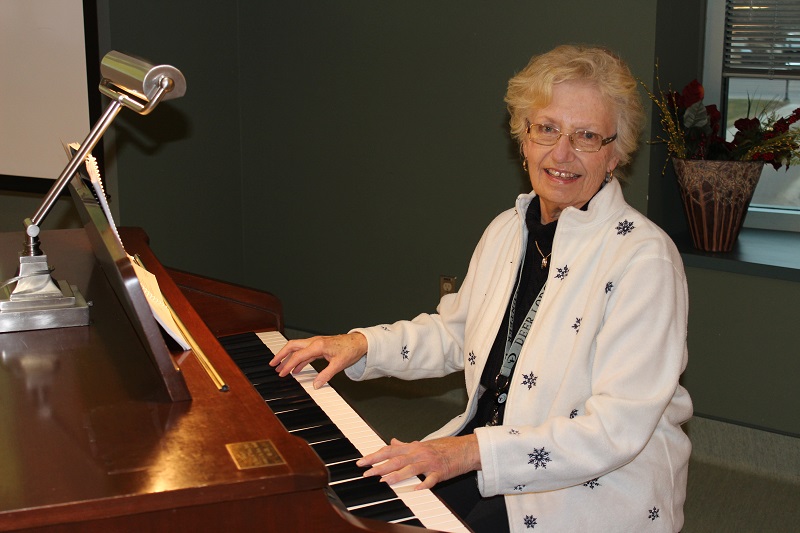
Volunteer Profile: Carole Grier
